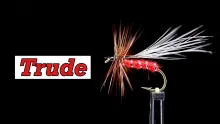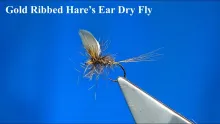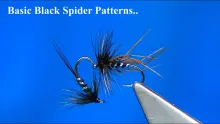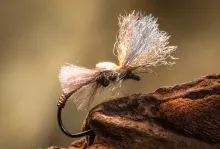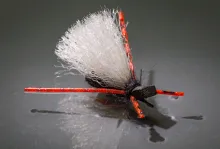The Half Stone is a pattern originated in Devon. Woolley lists the pattern in the Devon section of his book “Modern Trout Fly Dressings” as follows:
Body - 2/3 primrose silk and 1/3 dubbed with mole fur
Hackle - blue dun cock
From Cutcliffe and Woolley we know the Devon flies used hackle sized such that the barbs were the length of the shank and the hackle was spiral wrapped through the thorax - presumably the dubbed section in this pattern.
Taverner in his book “Fly Tying for Trout” (1939 like Woolley’s) talks about how wet flies either winged or hackled could be taken by trout thinking they are nymphs emerging. He mentions that until a design more specific to this stage can be created that his version of the Half Stone does a great job. Taverner’s version is a variation of Halford’s dry fly interpretation from 1886 and is listed as follows.
Body - half primrose floss and half primrose silk dubbed with mole fur.
Hackle - honey dun cock but of a webbier more hen like quality (henny) taken through the mole to the shoulder. Then 2 turns of a blue dun hen hackle.
We do not quite get the hackle proportions but Halford’s dry might shed some light. I tied a bit shorter than Cutcliffe going about the barb equal to body length. I also tied one with the cock hackle shorter and the hen longer.
Taverner says as a sedge emerger this pattern is very effective.
Leisenring also lists this pattern (altered a bit) as a nymph - adding a wire rib and changing the hackle to hen and short with no more than 3 turns at the shoulder.
Enjoy!
- Log in to post comments

